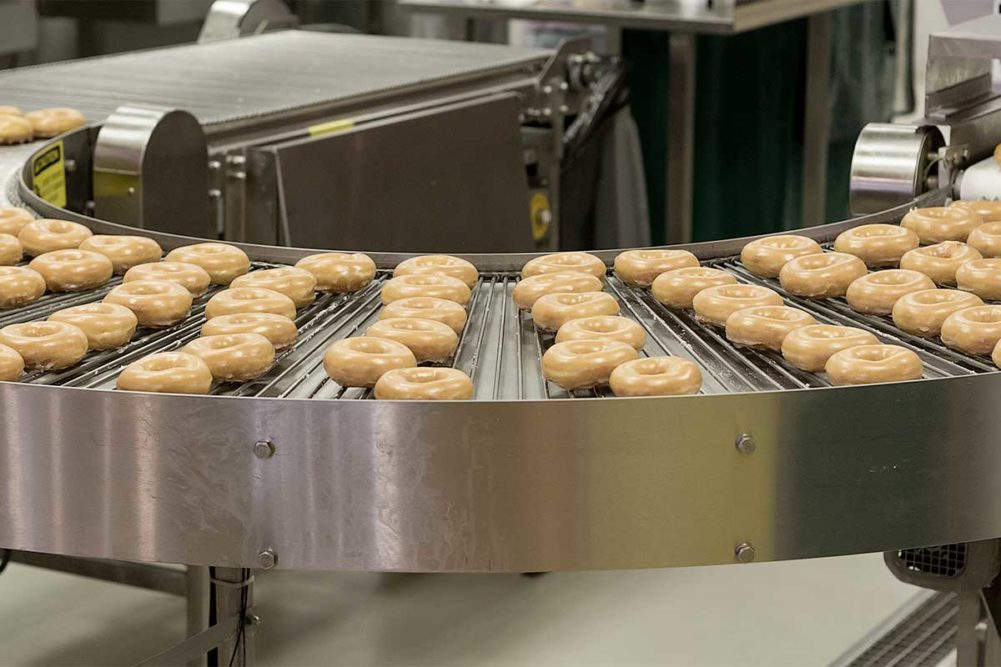Automating donut production provides many benefits that solve the biggest challenges producers face, but adding this automation can pose obstacles of its own. This requires bakers to do their homework on the automation they’re considering and confirm it’s the best fit, both for their product and for their production speeds.
“Ask for a proof of concept or a demo,” suggested Sonia Bal, director of global marketing, Unifiller. “Ensure proper training materials and cleaning guides are provided. Speak to your staff, let them know why the equipment is being brought in, and how it can help them.”
Ty Sarajian, president of Axis Automation, noted that Axis Automation encourages bakers to send operators and maintenance personnel to its facility during the final stages of equipment construction.
“This provides invaluable hands-on experience that can be used to ensure that the equipment starts up smoothly in the plant and achieves maximum overall equipment effectiveness as quickly as possible,” he said.
Automation simplifies many aspects of donut production, but it doesn’t mean bakers don’t have to pay attention, warned David Moline, vice president of sales and marketing for Moline Machinery.
“You still have to pay attention to preventative maintenance, especially when you’re talking about yeast-raised donuts,” he said.
This includes closely monitoring the operation of the cutter, as well as the cutting depth, making sure donuts are cut all the way through, he added.
“Paying attention to infrequent but important mechanical adjustments to the system is something that needs to be part of a consistent startup process,” Mr. Moline emphasized.
Ken Weekes, international sales manager, WP Bakery Group USA, noted that a more automated process requires donut producers to adjust to increased production speeds. He said they should spend plenty of time observing the line to see where any issues occur.
Proper training, testing and maintenance are critical to achieving a donut line that runs smoothly. Automation thrives on consistency, however, meaning inconsistent donuts may still wreak havoc on production.
“Whether it's a four-hour shift, six-hour shift or a 72-hour shift, you want to have consistent checkpoints so that you're always monitoring your dough,” Mr. Moline said. “Because dough is alive, and it changes constantly.”
He stressed that bakers must be mindful of temperatures in their facility as yeast-raised donuts are especially sensitive to ambient conditions.
Another common mistake that impacts consistency and quality during production, said Nick Magistrelli, vice president of sales, Rademaker USA, is overworking the dough during the sheeting process.
“This starts at the beginning of the process and progressively gets worse if the proper configuration isn’t selected,” he said.
After sheeting, donut producers often over or under proof the dough, said Alan Craker, director of sales and business development, Belshaw
“This can lead to inconsistent donuts or even donuts that cannot be sold at all,” he said. “Using a premix base for the dough and following a strict work process will help avoid this. A good quality proofer, box style or automated, will also help.”
At the fryer, Mr. Weekes added that donut quality can be harmed if the oil temperature is too low or if the oil is contaminated by particulates, which degrades the quality of the oil.
“The processing system chosen must be accurate when flour dusting to keep this to an absolute minimum, and continuous filtration of the frying oil will also help,” he explained. “This combination will ensure long production runs without stopping for cleaning.”
Once donuts reach icing and filling, unform product size is essential.
“Whether you’re filling a ring, a Bismark or shell, you have to maintain very tight tolerances on your product shape,” Mr. Moline said. “And that goes back all the way to the beginning of the process of mixing, extrusion, sheeting — making sure that your system is as relaxed as possible, so that it's as consistent as possible, and that your filler is going be able to operate as efficiently as possible.”
However, icing application will only be as effective as the quality of the icing itself. The icing formulation determines application temperature, set time and how it adheres to the donut, Mr. Sarajian said.
“Icing systems need to incorporate precise temperature control to ensure that icing stays within the optimal range and has the longest useful life,” he said. “Keep in mind that icing can be sensitive to moisture evaporation, and some can be damaged by the action of different types of pumps. These changes to the icing over time can have an impact on how the icing adheres to the products and how it sets up on the product.”
This article is an excerpt from the June 2023 issue of Baking & Snack. To read the entire feature on Donut Processing, click here.





